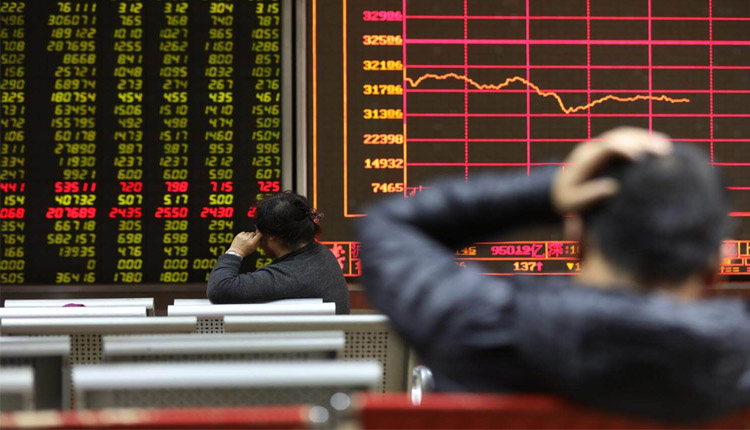Stocks in major Asia Pacific markets mostly slipped on Thursday as increasing tensions between the U.S. and China weighed on investor sentiment.
The Nikkei 225 in Japan slipped 0.29% to close at 20,942.53, as shares of index heavyweights Fast Retailing and Softbank Group declined more than 1% each. The Topix index also fell 0.29% to finish its trading day at 1,531.98.
In Australia, the ASX 200 shed 0.74% to close at 6,392.10 as almost all the sectors declined.
Mainland Chinese shares declined on the day, with the Shanghai composite slipping 0.31% to 2,905.81 and the Shenzhen component shedding 0.74% to 8,943.35. The Shenzhen composite also fell 0.625% to close at 1,532.03.
Over in Hong Kong, the Hang Seng index was lower by around 0.3%, as of its final hour of trading.
South Korea’s Kospi bucked the overall trend as it rose 0.77% to close at 2,038.80, with shares of industry heavyweight Samsung Electronics gaining 1.79%. The MSCI Asia ex-Japan index was also 0.24% higher at 498.17, as of 3:10 p.m. HK/SIN.
In U.S. markets, the Dow Jones Industrial Average closed 221.36 points lower at 25,126.41 — declining more than 200 points for the second consecutive day — while the S&P 500 slipped around 0.7% to end its trading day at 2,783.02. The Nasdaq Composite declined by about 0.8% to close at 7,547.31.
The moves on Wall Street came as the 10-year Treasury note yield fell to its lowest level since September 2017 before rebounding to about 2.26%. A portion of the yield curve further inverted as 3-month Treasury bills yielded 2.36%, well above the 10-year rate. The phenomenon, known as a yield curve inversion, is seen by traders as a potential sign that a recession may be on the horizon.
Meanwhile, investors continue to watch for developments on the U.S.-China trade front, with Beijing making threats this week.
“We advise the U.S. side not to underestimate the Chinese side’s ability to safeguard its development rights and interests. Don’t say we didn’t warn you!” the People’s Daily — the official newspaper of the Communist Party of China — said in a commentary piece.
One economist told CNBC on Thursday that “the gloves are off” between the two economic powerhouses.
“Both sides are quite serious now, which i think is why … the market’s responding so negatively,” Rob Carnell, chief economist and head of Asia Pacific research at ING, told CNBC’s “Street Signs” on Thursday.
“Right now, it’s difficult to see where … the circuit breaker comes in and stops … these two sides … from taking pot shots at each other,” Carnell said.
That comes after China recently made a veiled threat earlier this week through its state media regarding rare earth minerals, a material whose production is dominated by China and a critical component to the U.S. tech and defense industries. Beijing’s comments came on the back of U.S. President Donald Trump’s decision to blacklist Chinese telecommunications giant Huawei, which led to many chipmakers and internet companies cutting ties with the company.
“I think both sides … forget that Huawei gets supplied by U.S. suppliers … and the other way around,” Vishnu Varathan, head of economics and strategy at Mizuho Bank, told CNBC’s “Squawk Box” on Thursday.
“The economic impact … on national firms are being subordinated to greater strategic … and nationalistic strategies, I think,” Varathan said.
The U.S. dollar index, which tracks the greenback against a basket of its peers, was at 98.137 after touching an earlier low of 98.088.
The Japanese yen traded at 109.76 against the dollar after seeing highs around 109.2 in the previous session, while the Australian dollar changed hands at $0.6932 after touching an earlier low of $0.6913.
Oil prices advanced in the afternoon of Asian trading hours, with the international benchmark Brent crude futures contract adding 0.63% to $69.89 per barrel. U.S. crude futures also gained 1.02% to $59.41 per barre



